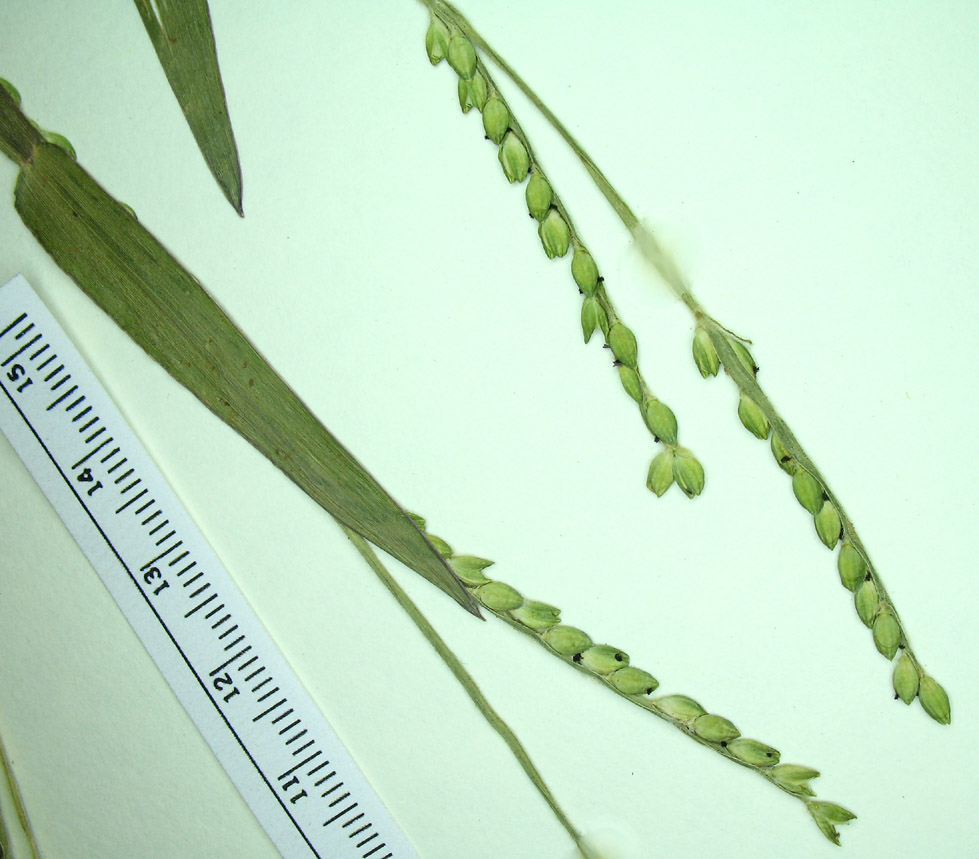Urochloa
|
Family: Poaceae |
Plants annual or perennial; usually cespitose, sometimes mat-forming, sometimes stoloniferous. Culms 5-500 cm, herbaceous, erect, geniculate, or decumbent and rooting at the lower nodes. Sheaths open; auricles rarely present; ligules apparently of hairs, the basal membranous portion inconspicuous; blades ovate-lanceolate to lanceolate, flat. Inflorescences terminal or terminal and axillary, usually panicles of spikelike primary branches in 2 or more ranks, rachises not concealed by the spikelets; primary branches usually alternate or subopposite, spikelike, and 1-sided, less frequently verticillate, axes flat or triquetrous, usually terminating in a well-developed, rudimentary spikelet; secondary branches present or absent, axes flat or triquetrous; disarticulation beneath the spikelets. Spikelets solitary, paired, or in triplets, subsessile or pedicellate, divergent or appressed, ovoid to ellipsoid, dorsally compressed, in 1-2(4) rows, with 2 florets, lower or upper glumes adjacent to the branch axes. Glumes not saccate basally; lower glumes usually 1/5-2/3 as long as the spikelets, occasionally equaling the upper florets, (0)1-11-veined; upper glumes 5-13-veined; lower florets sterile or staminate; lower lemmas similar to the upper glumes, 5-9-veined; lower paleas if present, usually hyaline, 2-veined; upper florets bisexual, sessile, ovoid to ellipsoid, usually plano-convex, usually glabrous, not disarticulating, mucronate or acuminate; upper lemmas indurate, transversely rugose and verrucose, 5-veined, margins involute, apices round to mucronate, or aristate; upper paleas rugose, shiny or lustrous; lodicules 2, cuneate, truncate; anthers 3. Caryopses ovoid to elliptic, dorsally compressed; embryos 1/2-3/4 as long as the caryopses; hila punctate to linear. x = 7, 8, 9, or 10. Name from the Greek ouros, tail and chloa, grass, a reference to the abruptly awned lemmas of some species. |

